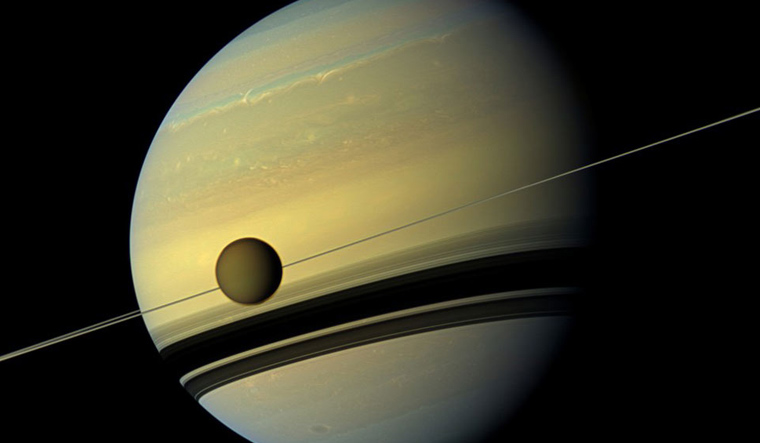
NASA has announced that it would launch a spacecraft in 2020 to explore the unique and richly organic world Titan.
Titan is an analog to the very early Earth and can provide clues to how life may have arisen on our planet.
Taking advantage of Titan's dense atmosphere and low gravity, a rotorcraft called 'Dragonfly' will fly to dozens of promising locations on Titan looking for prebiotic chemical processes common on both Titan and Earth, the US space agency said in a statement.
It will arrive at the Saturn's moon in 2034 and will explore diverse environments from organic dunes to the floor of an impact crater where liquid water and complex organic materials key to life once existed together for possibly tens of thousands of years, according to the statement.
"Dragonfly will visit a world filled with a wide variety of organic compounds, which are the building blocks of life and could teach us about the origin of life itself," said Thomas Zurbuchen, NASA's associate administrator for Science at the agency's headquarters in Washington.
Its instruments will study how far prebiotic chemistry may have progressed.
They also will investigate the moon's atmospheric and surface properties and its subsurface ocean and liquid reservoirs. Additionally, instruments will search for chemical evidence of past or extant life, according to the statement.
They also will investigate the moon's atmospheric and surface properties and its subsurface ocean and liquid reservoirs. Additionally, instruments will search for chemical evidence of past or extant life.
"It's remarkable to think of this rotorcraft flying miles and miles across the organic sand dunes of Saturn's largest moon, exploring the processes that shape this extraordinary environment," Zurbuchen said.



No comments:
Post a Comment